Abstract
Zubrzycki, Leonard (Temple University, Philadelphia, Pa.) and Earle H. Spaulding. Studies on the stability of the normal human fecal flora. J. Bacteriol. 83:968–974. 1962.—The results of two series of stool cultures show that members of the genus Bacteriodes constitute the most numerous group of bacteria in the normal human adult fecal flora. Together with the enterococci, coliform bacilli, diphtheroids, and lactobacilli, these major components account for more than 99% of the total counts. Wide fluctuations in the number and types of minor organisms observed suggest the probability that they are held in check by these major components which may also possess mechanisms for preventing pathogens from establishing themselves in the large bowel.
Full text
PDF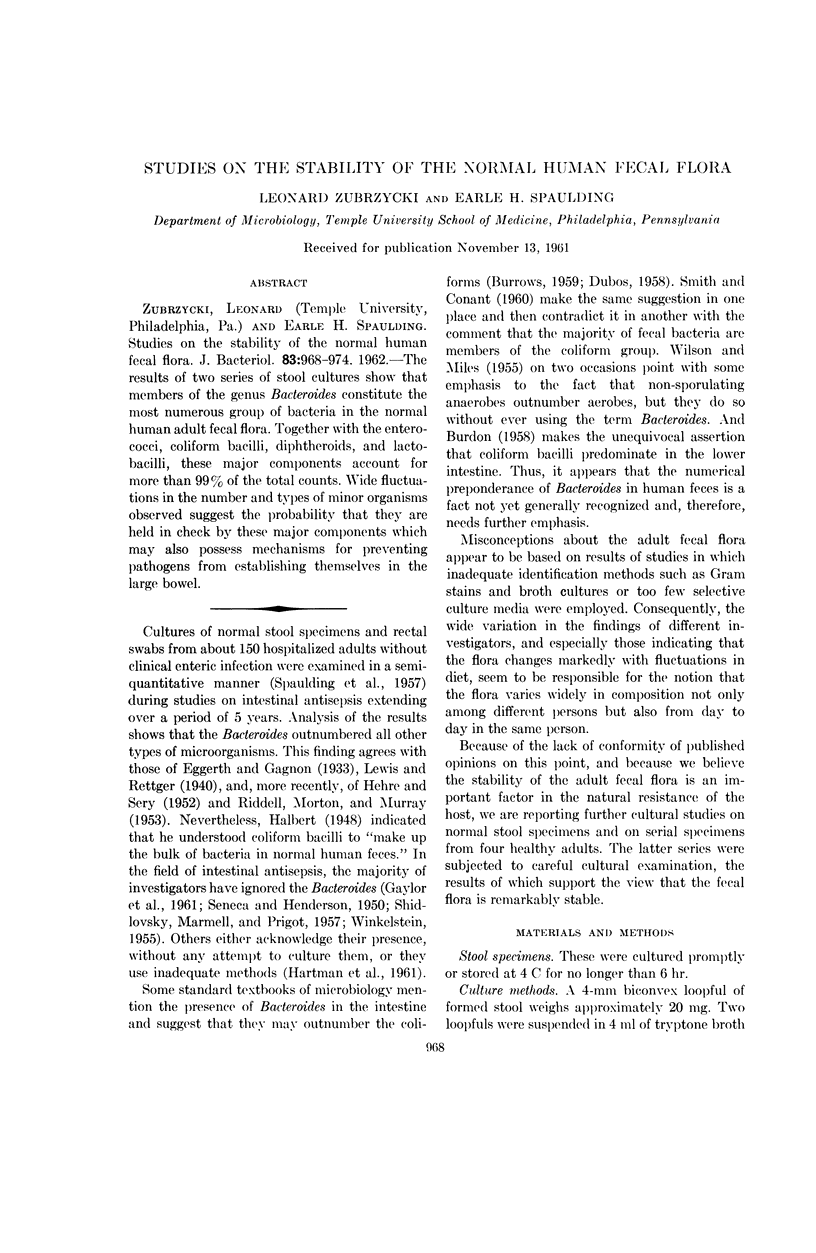
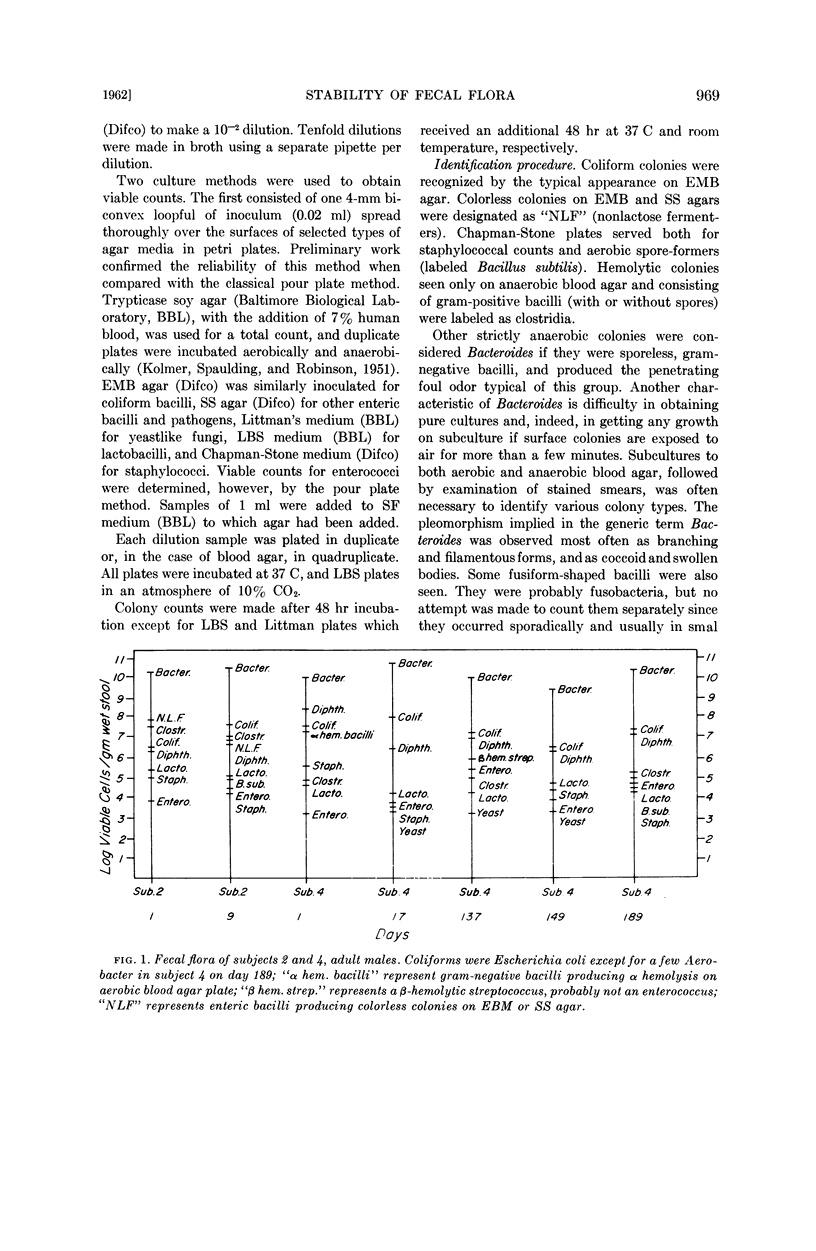
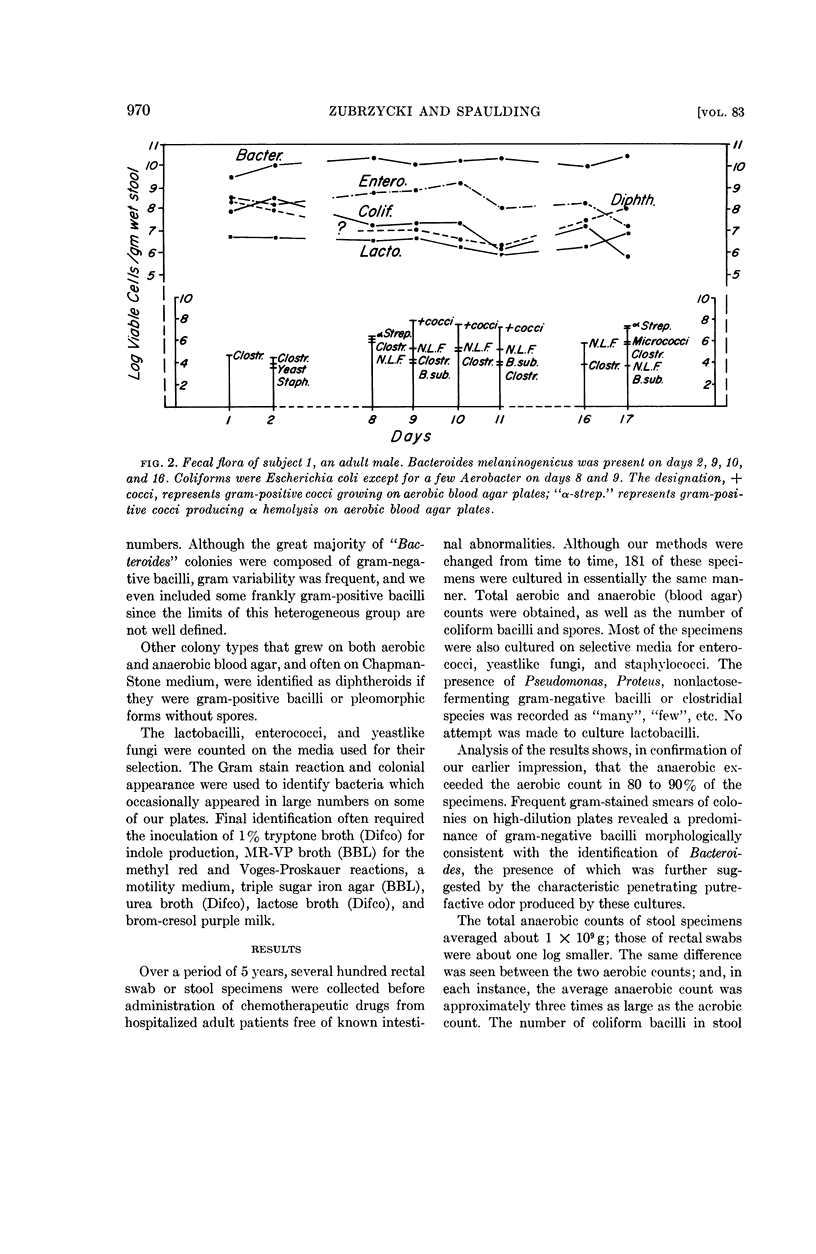
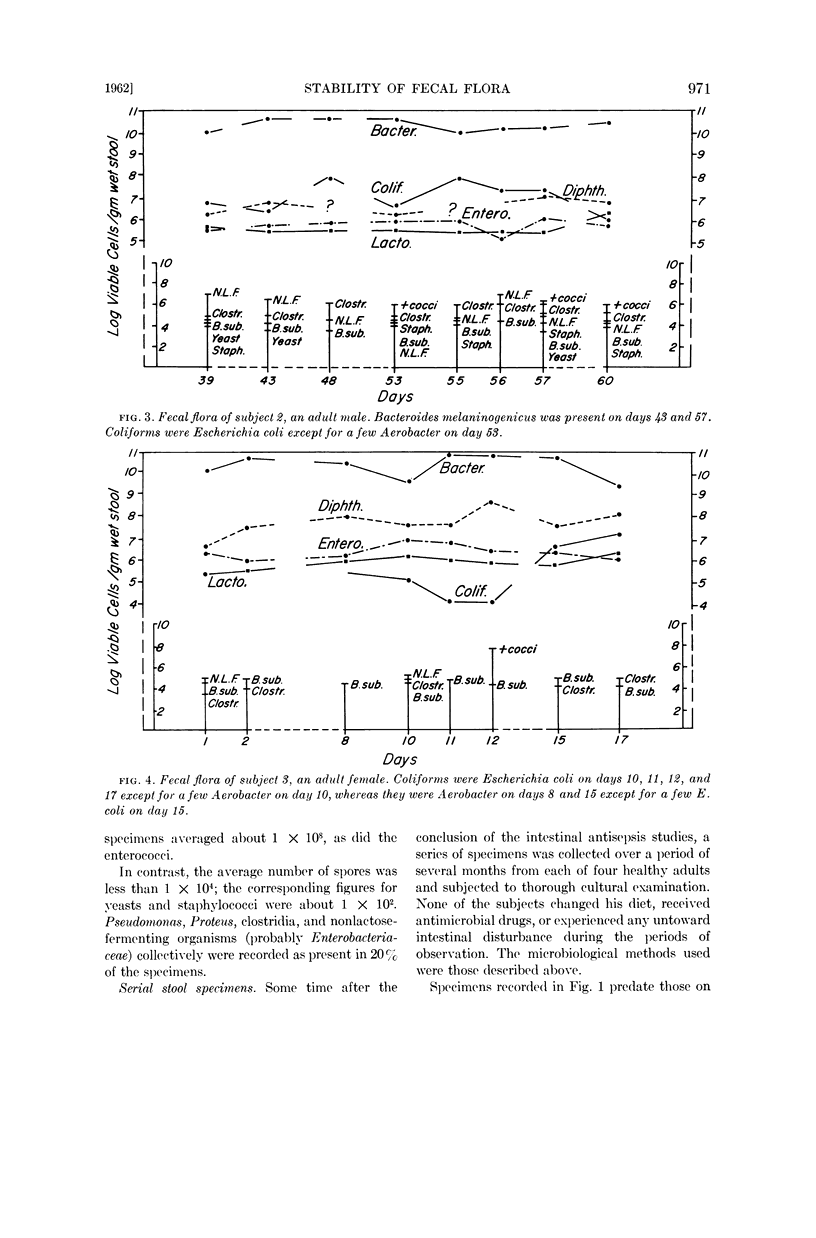
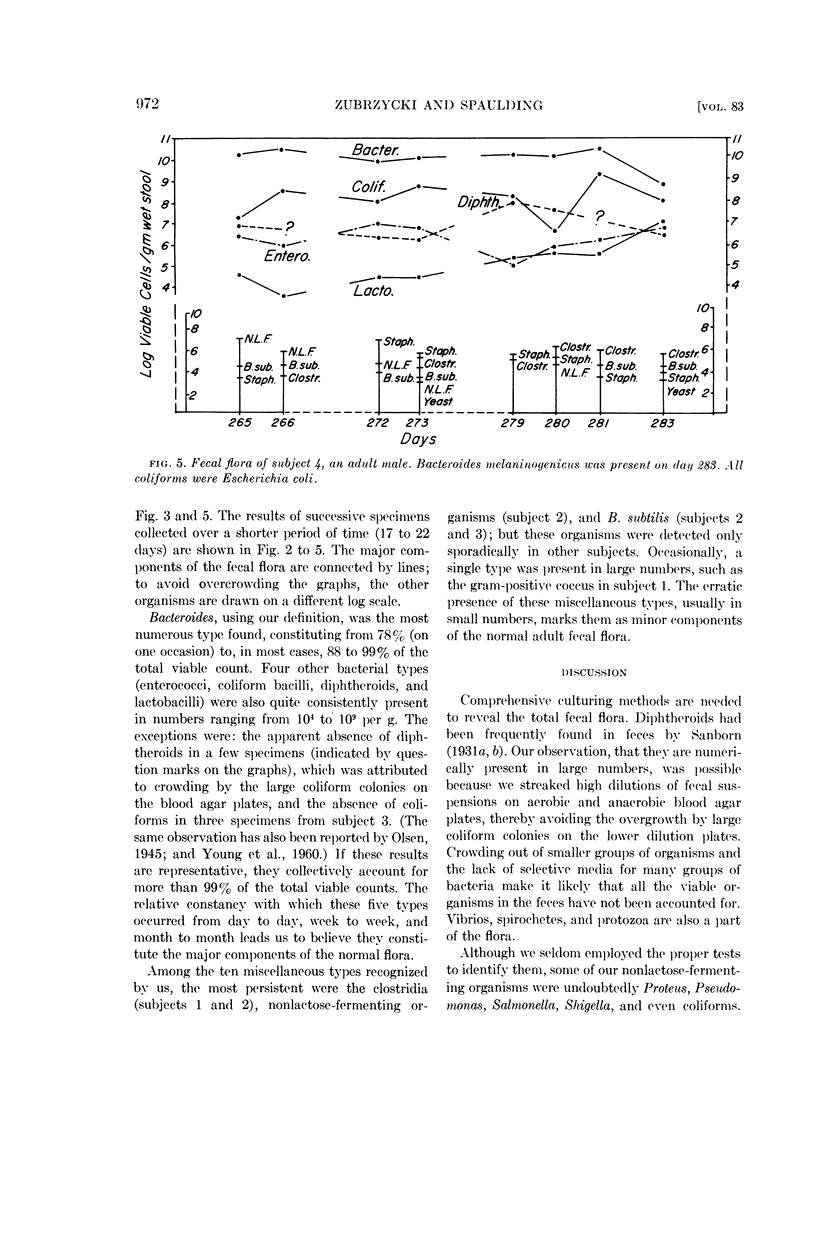

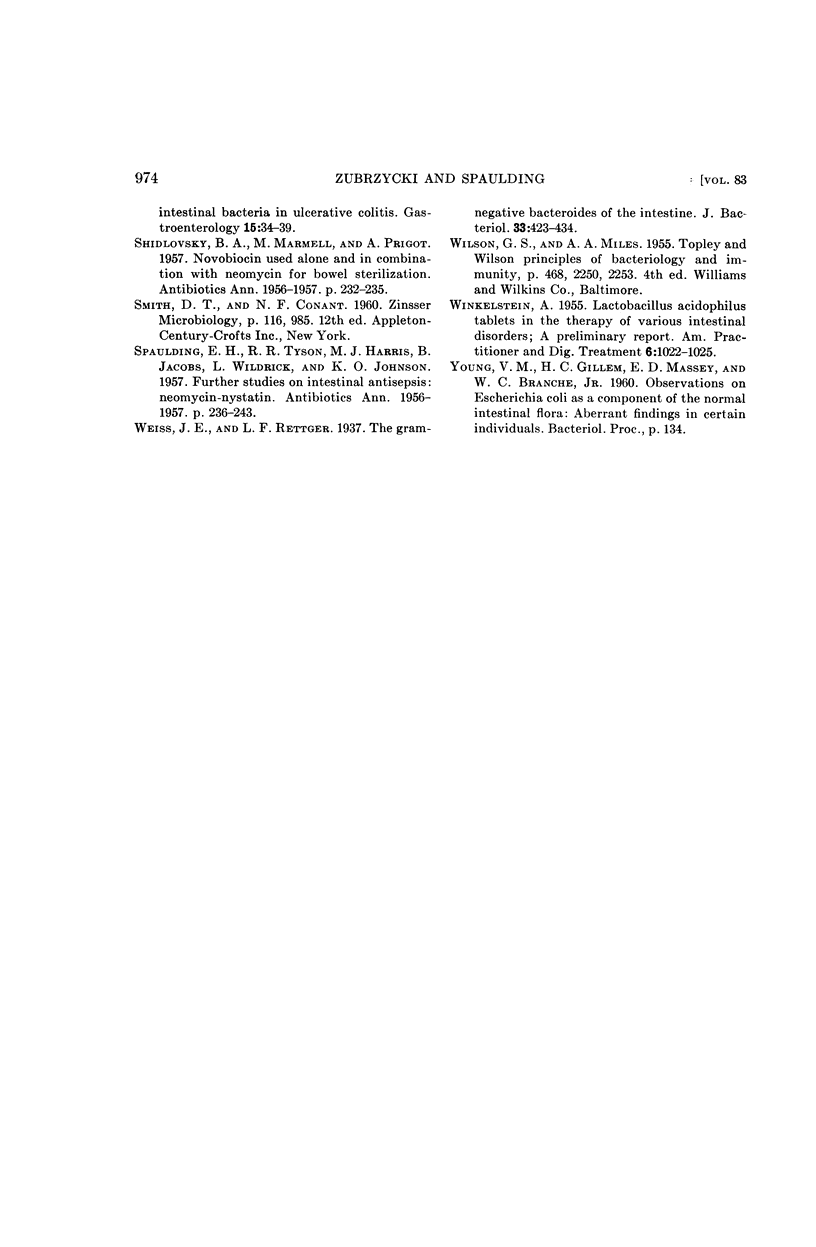
Selected References
These references are in PubMed. This may not be the complete list of references from this article.
- Eggerth A. H., Gagnon B. H. The Bacteroides of Human Feces. J Bacteriol. 1933 Apr;25(4):389–413. doi: 10.1128/jb.25.4.389-413.1933. [DOI] [PMC free article] [PubMed] [Google Scholar]
- HEHRE E. J., SERY T. W. Dextransplitting anaerobic bacteria from the human intestine. J Bacteriol. 1952 Mar;63(3):424–426. doi: 10.1128/jb.63.3.424-426.1952. [DOI] [PMC free article] [PubMed] [Google Scholar]
- KRAUS F. W., GASTON C. Individual constancy of numbers among the oral flora. J Bacteriol. 1956 Jun;71(6):703–707. doi: 10.1128/jb.71.6.703-707.1956. [DOI] [PMC free article] [PubMed] [Google Scholar]
- Lewis K. H., Rettger L. F. Non-Sporulating Anaerobic Bacteria of the Intestinal Tract : I. Occurrence and Taxonomic Relationships. J Bacteriol. 1940 Aug;40(2):287–307. doi: 10.1128/jb.40.2.287-307.1940. [DOI] [PMC free article] [PubMed] [Google Scholar]
- MILLER C. P. Protective action of the normal microflora against enteric infection: an experimental study in the mouse. Med Bull (Ann Arbor) 1959 Aug;25:272–279. [PubMed] [Google Scholar]
- RIDDELL M. I., MORTON H. S., MURRAY E. G. D. The value of dihydrostreptomycin in pre-operative preparation of the gut. Am J Med Sci. 1953 May;225(5):535–546. doi: 10.1097/00000441-195305000-00011. [DOI] [PubMed] [Google Scholar]
- SENECA H., HENDERSON E. Normal intestinal bacteria in ulcerative colitis. Gastroenterology. 1950 May;15(1 1):34–39. [PubMed] [Google Scholar]
- SHIDLOVSKY B. A., MARMELL M., PRIGOT A. Novobiocin used alone and in combination with neomycin for bowel sterilization. Antibiot Annu. 1956:232–235. [PubMed] [Google Scholar]
- SPAULDING E. H., TYSON R. R., HARRIS M. J., JACOBS B., WILDRICK L., JOHNSON K. O. Further studies on intestinal antisepsis; neomycin-nystatin. Antibiot Annu. 1956:236–243. [PubMed] [Google Scholar]
- WINKELSTEIN A. Lactobacillus acidophilus tablets in the therapy of various intestinal disorders: a preliminary report. Am Pract Dig Treat. 1955 Jul;6(7):1022–1025. [PubMed] [Google Scholar]
- Weiss J. E., Rettger L. F. The Gram-negative Bacteroides of the Intestine. J Bacteriol. 1937 Apr;33(4):423–434. doi: 10.1128/jb.33.4.423-434.1937. [DOI] [PMC free article] [PubMed] [Google Scholar]


